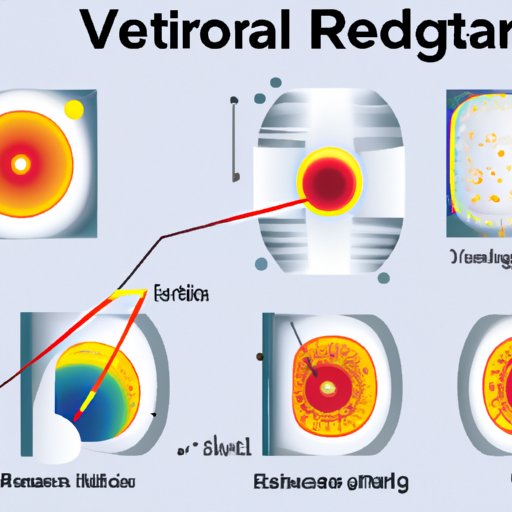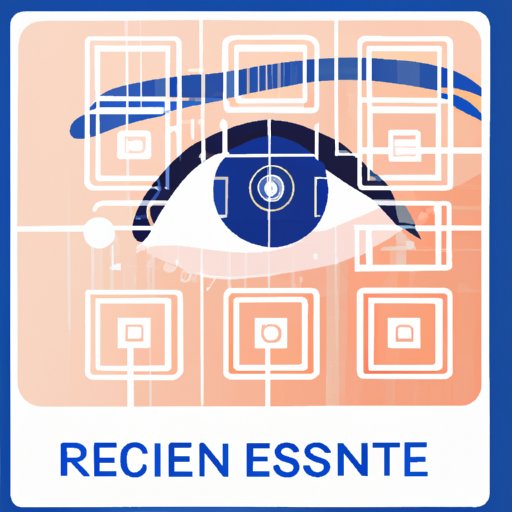Introduction
A retinal scan is a form of biometric identification that uses an individual’s unique eye pattern to verify their identity. It is a secure and reliable way of authenticating personal information and has been used in various industries for decades. In this article, we will explore the technology behind retinal scanning and explain the benefits, processes, and drawbacks of using this method.

An Overview of Retinal Scans and How They Work
Retinal scans use a special imaging device to capture an image of the back of the eye, which is called the fundus. The fundus contains a unique pattern of blood vessels and other features that can be used to identify a person. This image is then compared to previous images of the same person’s eye to verify their identity.
Exploring the Technology Behind Retinal Scanning
Retinal scanning technology has been around since the late 1970s. Since then, the technology has advanced significantly. Today, retinal scanners use high-resolution cameras to capture images of the fundus. These images are then analyzed by sophisticated algorithms to detect the unique patterns in the eye. This process is quick and accurate, making it ideal for use in a variety of applications.
A Step-by-Step Guide to Retinal Scanning Processes
The retinal scanning process typically follows these steps:
- The subject is asked to look into the retinal scanner, which is usually mounted on a wall or stand.
- The scanner emits a low-level infrared light that illuminates the subject’s eye.
- The scanner captures an image of the back of the eye (the fundus) and transmits it to the computer.
- The computer analyzes the image and compares it to a database of known patterns.
- If the patterns match, the subject’s identity is verified.
The Pros and Cons of Retinal Scanning
Retinal scanning has many advantages, but it also has some drawbacks. Let’s take a closer look at the pros and cons of this technology.
Advantages of Retinal Scans
Retinal scans offer several advantages over other forms of biometric identification. These include:
- High accuracy – Retinal scans are highly accurate and can accurately identify an individual with a very low false acceptance rate.
- Non-invasive – Retinal scans are non-invasive and do not require any contact between the subject and the scanner.
- Secure – Retinal scans are secure and difficult to spoof or duplicate.
- Fast – Retinal scans can be completed quickly and efficiently.
Disadvantages of Retinal Scans
On the other hand, there are some drawbacks to retinal scanning technology, including:
- Expense – Retinal scanners can be expensive to purchase and maintain.
- Uncomfortable – Some people find the experience of having their eyes scanned to be uncomfortable.
- Limited access – Retinal scanners are limited to stationary locations, meaning they cannot be used in mobile applications.
Conclusion
Retinal scans are a secure and reliable form of biometric identification that can be used in a variety of applications. They offer numerous benefits, such as high accuracy and fast processing times, but they also have some drawbacks, such as expense and limited access. Ultimately, whether or not retinal scans are right for your organization depends on your specific needs and requirements.
Summary of Key Points
In conclusion, retinal scans are a form of biometric identification that use an individual’s unique eye pattern to verify their identity. They offer numerous advantages, such as high accuracy and fast processing times, but they also have some drawbacks, such as expense and limited access. Ultimately, whether or not retinal scans are right for your organization depends on your specific needs and requirements.
Final Thoughts on Retinal Scans
Retinal scans are a secure and reliable way of authenticating personal information, and they have become increasingly popular in recent years. If you are looking for a secure and efficient way to verify the identity of your customers, employees, or other individuals, retinal scans may be the perfect solution for your organization.
(Note: Is this article not meeting your expectations? Do you have knowledge or insights to share? Unlock new opportunities and expand your reach by joining our authors team. Click Registration to join us and share your expertise with our readers.)
